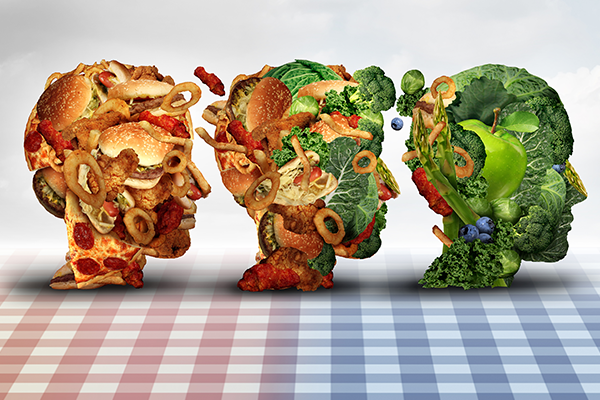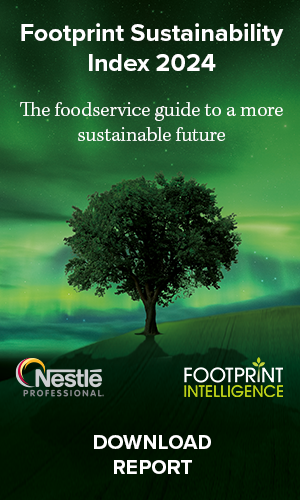The publication of a new book on ultra-processed foods has once again exposed clear divisions over their impact on health and the environment. Nick Hughes reports.
It’s shaping up to be the defining nutrition debate of our time. Disagreement over the role of ultra-processed foods in our diets has been simmering away for years amid evidence linking their consumption with negative health and environmental outcomes. In April, the row reached boiling point after the British Nutrition Foundation (BNF) published a controversial position statement arguing against blanket dietary advice to avoid ultra-processed foods, some of which it argued can contribute to an affordable, healthy, balanced diet.
The release of the statement coincided with the launch of a new book, ‘Ultra-processed people’, by Dr Chris van Tulleken which carries the provocative sub-title ‘Why do we all eat stuff that isn’t food – and why can’t we stop?’ In it, the infectious diseases doctor and TV presenter sets out the case for the negative impact consumption of ultra-processed food (UPF) is having on our health and that of the planet.
Social media has subsequently become a battleground for heated debate on the role of UPF in our diets. Are these foods as malign as critics claim? Is it right to lump a range of different foods together under the catch-all category of ultra-processed? And what does the evidence tell us about the impact of UPF production and consumption on human and environmental health?
NOVA system
First, some context. There is no legal definition of UPF although the term is defined in the NOVA classification – a system of grades from one to four that compares the degree of processing of food and drink products. It ranges from unprocessed or minimally processed foods like fruits and eggs in group one to ultra-processed foods like cereals, biscuits, cakes and chicken (or vegan) nuggets in group four. These are distinguished from other foods both by the use of non-domestic, industrial processes like hydrogenation, extrusion and moulding, and by the fact the final product contains little if any intact food from group one.
A number of countries already advise the reduction or avoidance of UPF in dietary advice, including Brazil where the NOVA classification was developed. In the UK, UPF is currently not referred to in government dietary recommendations, albeit foods categorised as ultra-processed are estimated to make up more than 50% of energy intake in the UK.
In his independent national food strategy, Henry Dimbleby detailed how UPFs could be an important contributor to over consumption of higher calorie foods (as part of his so-called “junk food cycle”), however the government in its response said that further research is needed to determine their exact role in driving obesity.
Some evidence does already exist suggesting a relationship between UPF consumption and negative health outcomes. A study of UK adults published in 2020 found that a diet high in UPF is associated with a clinically important increased risk of type 2 diabetes. The researchers concluded that “identifying and implementing effective public health actions to reduce UPF consumption in the UK and globally are urgently required”.
A new study from earlier this year, meanwhile, found that diets high in UPF could be linked to an increased risk of developing and dying from cancer. Researchers from Imperial College London’s School of Public Health, funded by Cancer Research UK and the World Cancer Research Fund, found that higher consumption of UPF was associated with a greater risk of developing cancer overall, and specifically with ovarian and brain cancers. It was also associated with an increased risk of dying from cancers.
Correlation or causation?
If the evidence is seemingly clear, why is there such disagreement over the health effects of UPF? In its position statement, the BNF said that evidence to date linking high intakes of UPF with poor health outcomes including heart disease, type 2 diabetes, obesity and cancer has largely been based on observational studies. “Although such studies have shown consistent associations, it is difficult to untangle the impact of less healthy dietary patterns and lifestyles and they do not provide clear evidence of a causal association between processing per se and health,” it stated.
It is certainly the case that proving causation is challenging. In a 2021 article published in The Lancet, Bernard Srour and Mathilde Touvier, researchers in nutritional epidemiology at the University of Paris, noted how “long-term randomised controlled trials (RCT) to test the impact of UPF on hard clinical outcomes are not feasible for ethical reasons” (because they would essentially mean people having to eat UPF for much of their lifetime), although they added that “short-term RCTs on intermediate clinical endpoints can advance knowledge”. They cited one particularly influential study showing that an ultra-processed diet consumed over a period of two weeks led to increased energy intake and weight gain compared with an unprocessed diet.
Formulation conundrum
A key battleground that has emerged since the publication of the BNF statement is over the implication that all UPF is inherently ‘bad’ regardless of what goes into making it. While it acknowledges the NOVA classification captures “many foods that have a poor nutritional profile, are energy dense and high in fat, sugars and salt”, the BNF notes how “the definition of UPF can also include foods such as sliced wholemeal bread and lower sugar wholegrain breakfast cereals which can contribute to an affordable healthy, balanced diet”.
There is indeed some evidence to suggest that consumption of different types of UPF does lead to different health outcomes. Three US studies into the relationship between UPF intake and type 2 diabetes published in the Diabetes Care journal showed that total UPF consumption is associated with higher risk of type 2 diabetes, however some UPF subgroups like cereals and dark and whole-grain breads were associated with lower risk.
In a recent webinar organised by trade body FoodDrinkEurope, representatives from the food industry and academia addressed the question of whether classifications such as NOVA focus too much on the processing of food and not enough on the ingredients that go into making it. “There is a mix up between what we would say is formulation and actual processing,” argued Gert Meijer, Nestlé deputy head for corporate regulatory and scientific affairs. “There is no proven relationship between the degree of processing and the healthiness of a food product,” Meijer added.
Nestlé, it can be argued, has skin in the game as one of the world’s biggest producers of what NOVA would classify as UPFs. Indeed, the food industry’s funding of the BNF – which counts the likes of Nestlé, Mondelēz, PepsiCo, McDonald’s and Starbucks among its corporate members – has come under scrutiny with van Tulleken describing itas “a great example of how these companies influence policy and your health”.
Moreover, critics of UPF maintain that the processing really is the problem since evidence linking UPF with poor health outcomes relates to dietary patterns not individual products. Van Tulleken was recently asked in a New Scientist interview why ultra-processed food is worse than the food we cook from scratch at home. His detailed, technical reply is worth sharing in full: “The industrial processes involved in food manufacturing change its chemical and physical structure. They reduce food crops to their core constituents, such as high fructose corn syrup made from corn starch or hydrolysed vegetable protein from soya beans, which are then reformulated into substances that are highly palatable and calorific. These processes strip out fibre and micronutrients. Then ingredients are added that our bodies haven’t evolved to cope with, such as artificial flavourings and emulsifiers. We have evolved to eat naturally arranged matrices of different chemical constituents and when you separate them into their molecular components and chemically modify them, they seem to interact with the body in a very different way.”
Environmental effects
The way in which different foods interact with our gut microbiome – and the impact on our health – is garnering a lot of attention from scientists (it’s a key focus of the work of Tim Spector, a professor of genetics and author of books including The Diet Myth). For now it is difficult to paint the answer in black and white, meaning the debate over the health impacts of UPF will rumble on.
But what of the environmental effects? This is another question that is fiercely contested. A 30-year study on the Brazilian diet published in The Lancet Planetary Health journal in 2021 found that increased consumption of UPF, including sausages, margarines, sweets and soft drinks, was linked to worsened environmental impacts such as greenhouse gas emissions as well as a high water and ecological footprint (such as deforestation).
The Soil Association, meanwhile, argued there is a “symbiotic relationship between industrial food and industrial farming” in a 2021 report titled ‘Ultra-processed planet’. It said the production of commodity ingredients commonly used in the manufacture of UPF like palm, soya, wheat, maize, milk, eggs, and meat “has […] placed a growing burden on natural environments, positioning farming at the heart of the climate and nature crises”.
Yet others point out that technological developments in processing are helping solve some of the planet’s greatest challenges. Speaking during the FoodDrinkEurope webinar Andreas Hakansson, senior lecturer in the department of food technology, engineering and nutrition at Lund University, Sweden, cited meat alternative products and margarine as examples of highly processed foods that have a lower carbon footprint than less processed, animal-based alternatives like meat and butter. Nestlé’s Meijer added that “by processing food you also increase the shelf-life that potentially can lead to a reduction in food waste”.
The discourse around UPF is spilling over into the mainstream media. In recent weeks almost every national newspaper has carried an article on UPF following the publication of Ultra-processed people. Those same people it seems are starting to pay attention; the BNF released the results of a new survey alongside its position statement showing public concern about UPF is on the rise. Compared to the same survey carried out in 2021, more people had heard of the term ‘ultra-processed food’ in 2023 (46% versus 30%) and were trying to reduce these foods in their diet (33% versus 25%).
The momentum appears to be with those who believe UPF is a blight on our dietary landscape. Just don’t expect their opponents in the food industry and beyond to concede the argument quietly.














